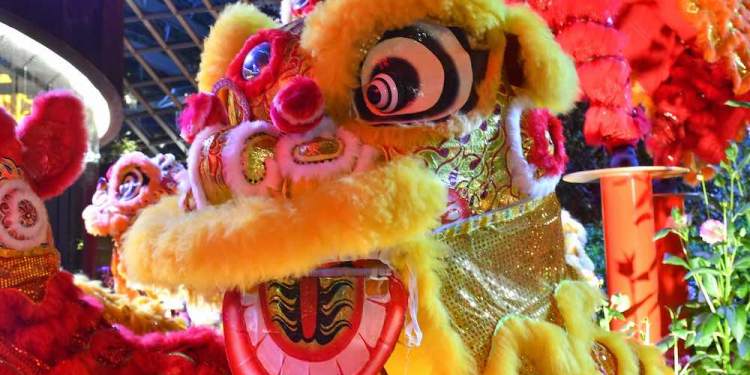The Year of the Ox brought vaccines to a global pandemic and many hope the Lunar New Year will bring healing and joy with the Year of the Tiger.
The Lunar New Year is an international holiday celebrated in many Asia countries but not all. People may know the holiday as China’s Chinese New Year, Vietnam’s Tết Nguyên Đán or South Korea’s Seollal. The United States is also home to some celebrations. Overall, over about 1.5 billion people across the world will take part in the festivities.
“In this day, for many Asian countries, Lunar New Year is perhaps the equivalent of Thanksgiving or Christmas,” Eddy Keming Chen, philosophy professor and faculty member of the Chinese Studies Program at University of California, San Diego, told USA TODAY.
Lunar New Year: Will small businesses roar back in 2022, the Year of the Tiger?
A woman carrying a child wear protective masks as they look at decorations for sale for the upcoming Chinese New Year and Spring Festival at a market on January 29, 2022 in Beijing, China.
When does Lunar New Year start?
Unlike the Gregorian calendar – which has Jan. 1 as the beginning of the new year – Lunar New Year doesn’t always start on the same day. The reason for that is the calendar is based on the moon’s 12 phases. Each phase lasts around 29 days, the full calendar is around 354 days long.
This Lunar New Year will be on Feb. 1. The 2023 new year will start Jan. 22.
What does Lunar New Year signify?
Just like how people celebrate Dec. 31 and Jan. 1 each year, Lunar New Year allows people to put the past behind and look forward to a fresh start.
“We want to send away all the bad things, evil spirits,” Xiaohua Yang, professor and director of the China Business Studies Initiative at the University of San Francisco, told USA TODAY. “This is a new start, so now we welcome it with new energy.”
It’s also a time for families to gather over grand feasts, Chen said.
How long is Lunar New Year?
Lunar New Year isn’t just one night or day of celebrating, as it lasts for several days.
In China, the celebration lasts 15 days, with the Spring Lantern Festival on the final day. Tết Nguyên Đán is a week long, and Seollal in South Korea goes for three days.
Families also continuously spent time with one another during each of the days, Yang said. She said that for most of the year, people spend so much time working, they don’t get to see relatives. This is the one time of the year where that can change.
“That’s when you pay respect to the elders, and that’s most important,” Yang said. “Even faraway relatives would come in and take advantage of this new year to come.”
Disney: A beloved Disney character is joining Disneyland’s Lunar New Year celebrations. See who it is.
What does the Year of the Tiger represent?
Each Lunar year is represented by a cycle of 12 zodiac animals. This year is the Year of the Tiger, the first since 2010.
“The tiger is commonly associate with something like bravery, courage and strength,” Chen said.
Yang added the tiger can also be viewed as an uplifting animal that can give people hope, especially with COVID-19.
“This nicely coincided with hopeful recovery from the pandemic crisis,” she said. “This actually is quite significant year in terms of the symbol.”
How do people celebrate Lunar New Year?
This will be the second Lunar New Year during the pandemic, but this year will have some in-person public festivities. The annual San Francisco Chinese New Year Festival and Parade will be live on Feb. 19 and Chicago will have a parade on Feb. 13.
Whether you are celebrating or see shops offering Lunar New Year merchandise, you may see a lot of red. That’s because in Chinese tradition, red is considered good luck and wards off any bad spirits. Children from Chinese backgrounds traditionally are given red envelopes with money by family.
Yang said another way bad spirits are kept away is by leaving lights on, and throughout the night, people will light off fireworks.
Yang encouraged those that don’t know or celebrate the holiday to learn and partake in any festivities they may encounter.
“The more we learn about each other, the more we appreciate each other, and the more we respect each other, the more we can live in peace with each other,” she said.
Contributing: Elinor Aspegren, Erin Jensen
USATODAY.com





























Discussion about this post